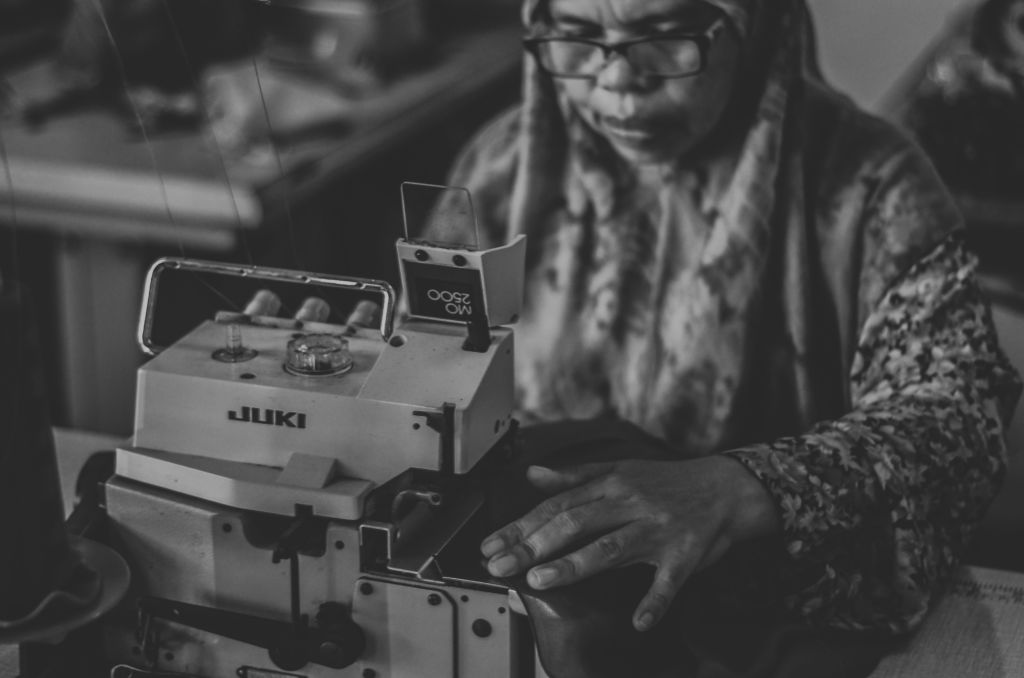
Is fashion production being relocated? With this rhetorical question McKinsey creates its report – Is apparel manufacturing coming home? – and uses it to interpret current events and clear future trends in the production of fashion clothing and accessories.
In this blog we have analyzed in depth this new paradigm of the sector, which I have personally called “the neo-relocalization of fashion production”; referring to the return of production from Asia to the proximity of Western markets. For more information and a deeper understanding of the new context, I recommend you read these two previous articles and visit the additional links you will find at the end of the first of them: Flexible, Fast and Transparent Fashion Supply | E-commerce personalizes fashion, provisioning responds.
Nearshoring, automation and sustainability: creating a demand-based fashion value chain.
Successful and leading fashion brands of the future will take the initiative to optimize the fashion value chain on two fronts: nearshoring and automation. It is not possible to choose just one of them and it must be carried out in a sustainable manner. These companies can no longer do business in the traditional way and expect good results. Because of the Internet and the stagnation of mature markets, competition for the market is tougher than ever and the desire and demand of consumers (the new digital customer) is much harder to predict. Brands that are part of the mass market and traditional retailers are competing with online start-ups and the most successful of these can replicate fashion styles and put them in front of customers in a few weeks.
To this novel situation we must add that brands have lost much of their influence in the establishment of fashion trends. In most mass market categories, today’s most popular trends are determined by influencers and consumers themselves rather than by brand design and marketing. The pressure generated by the decrease in full price sales (due to excess discounts and promotions) on margin and profitability, as well as the increasing attention to the environmental impact of overproduction, requires versatile production in small batches and a replenishment tailored to demand.
Reactive speed has become the essence of fashion.
In light of this new paradigm, speed-to-market and responsiveness during the season are now the two most important skills for the success of fashion industry players. The problem is that most of the “traditional players” of the sector are overwhelmed by the slowness of their planning and commercial processes and by the obsolete configuration of their supply chain. For these reasons they cannot keep up with their more agile competitors, or even maintain the pace demanded by the market.
The four levers of change.
- Mass-market brands and retailers cannot win in the next decade if they do not accelerate and transform into a demand-driven model. Fashion companies are applying four key levers to generate and support this transformation.
- Updating of current processes, e.g. multifunctional marketing teams, reduction of pre-production time and close and strategic collaboration with suppliers.
- Total digitization of processes at all stages of the fashion cycle: from intelligent consumer analysis to virtual prototyping and design (3D design), including integrated supplier management systems and e-business.
- Comprehensive analysis of inbound logistics, with the goal of achieving an effective balance between air and sea transport and establishing highly efficient storage systems.
Optimization of the production model -the focus of attention of this article and subsequent ones- including alternatives such as nearshoring, automation of new delivery processes around customization and shifts towards circular and sustainable value chains.
Offshoring vs. Neo-relocalization.
A little over twenty years ago, brands and retailers in the mass markets of the USA and Europe were rushing to move as much production as possible to Asia (especially China) with the firm aim of gaining a competitive advantage through lower costs. Since then, the competition has become a race to achieve better unit costs, where the focus has always been on optimizing sourcing by origins. It has even moved from China to frontier markets (Southeast Asia) or to Bangladesh always with the goal of lowering purchasing costs. Brands and retailers that have done so successfully, while ensuring quality, speed and compliance, have been able to bring relevant products to consumers at the best prices. So the next question is: Is apparel production becoming local again?
Fast reaction vs. marginal costs.
Today, the fashion industry is at a crossroads, where a quick and agile reaction beats the best cost advantage and basic sustainability compliance becomes a CSR strategy.
While the traditional configuration of the supply chain is being challenged and as labor costs become more equal, brands and retailers have begun to analyze more deeply their sourcing, supply and manufacturing models. Measures to increase nearshoring and automated production systems have the potential to enable greater sustainability and support the creation and development of a circular economy in the fashion industry. Apparel manufacturers who adopt new automation technologies to be faster and more sustainable are likely to be the winners of the future.
Bottom line: this paradigm shift will generate competitive advantage in fashion.
For many fashion brands, this new challenge can be seen as a big problem, as a breathtaking barrier on the way. They perceive it this way because their delivery times are long, their pre-production processes cumbersome and linear.
So what can they do? The answer without a doubt is: invest today, boldly, in nearshoring with a project that is well-founded, disciplined and balanced through automation and with clear precepts on sustainability.
Large distribution brands and retailers who analyze the current economic-financial viability, future prospects and decide to start this journey will surely generate multiple opportunities for their organizations. Doing so today, before the competition does, will allow them to understand, gain time and experience in the use of future production systems and supply of fashion driven by demand.
Download McKinsey’s report “Is apparel manufacturing coming home?”
If you are already registered or want to join click here Register / Log in











































